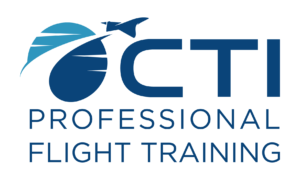Heroes in Flight: Charlie Taylor
There are many heroes that have helped advance aviation throughout the years. World War I saw soldiers in the sky, and advancements including machine guns, bombsights, and ocean-liner-sized dirigibles. World War II saw the dawn of modern jet propulsion and nearly 70 years of technological innovation and advancement. Charlie Taylor is another one of those aviators who helped advance aviation throughout its history. He may not be a household name like Beachey, Ader, or Lindbergh, but he definitely made his mark on history during the 1920s—when air shows were just becoming popular and airplanes had only been in commercial service for seven years.
Charlie and the Wright Brothers
Without Charlie Taylor, we might not have ever heard of the Wright Brothers. Charlie was originally hired to fix bicycles at the Wrights’ Ohio shop, but the mechanically inclined Taylor soon found himself promoted to building an engine for the brother’s flying machine. Every engine manufacturer the Wrights had contacted said they could not build what Wilbur and Orville needed. After a lot of sweat and toil Charlie built the 156 lb. 12 horsepower engine the propelled the Wright brothers into the history books.
“I always wanted to learn to fly, but I never did. The Wrights refused to teach me and tried to discourage the idea. They said they needed me in the shop and to service their machines, and if I learned to fly, I’d be gadding about the country and maybe become an exhibition pilot, and then they’d never see me again.” — Charlie Taylor
Early Life
Charlie Taylor was born in an Illinois log cabin in 1868. He worked as a binder at the Nebraska State Journal at the early age of 12. He became a toolmaker at age 24 and moved to Dayton, Ohio with his new wife. His first job in Ohio was at Stoddard Manufacturing Co. making farm machinery and bicycles. Shortly after when the Wright Brothers began renting from his wife’s uncle for their bicycle shop, Charlie started working for them.
The “Military Flyer”
In 1908 Taylor helped Orville Wright build the “military Flyer” for a demonstration to the U.S. Army at Fort Myer, Virginia. On September 17, the airplane crashed because of a shattered propeller. Orville was seriously injured, and his passenger, Army lieutenant Thomas Selfridge died. Taylor was one of the first to the scene of the crash. Taylor helped removed both men from the wreckage. The failure devastated him.
The Model A Flyer
A year later Taylor accompanied Wilbur Wright, with a new Model A Flyer, to Governor’s Island, New York City. Wilbur made several over-water flights demonstrating the airplane to millions of New Yorkers and showcasing the new technology. Charlie assisted Wilbur during the trip but did not fly with him. Charlie’s job was to make sure the engine worked perfectly, and it did.
Later Years
Charlie worked as the lead mechanic at the Wright Company for over a decade. He later moved to California and invested his life savings in several hundred acres of real estate, but the venture failed. He returned to Dayton in 1936, and he and Orville helped Henry Ford in the planning, moving, and restoration of the Wright family home and one of the bicycle shops.
Charlie Taylor died on January 30th, 1956, and was buried at the Portal of Folded Wings Shrine to Aviation in Burbank, California, a shrine to aviation history.
Ready to Start a Career in the Skies?
Thinking about getting a pilot certificate or starting a career in aviation? The demand for pilots is high, and the rewards are big. Book your discovery flight today and find out how CTI can get you started in aviation.
